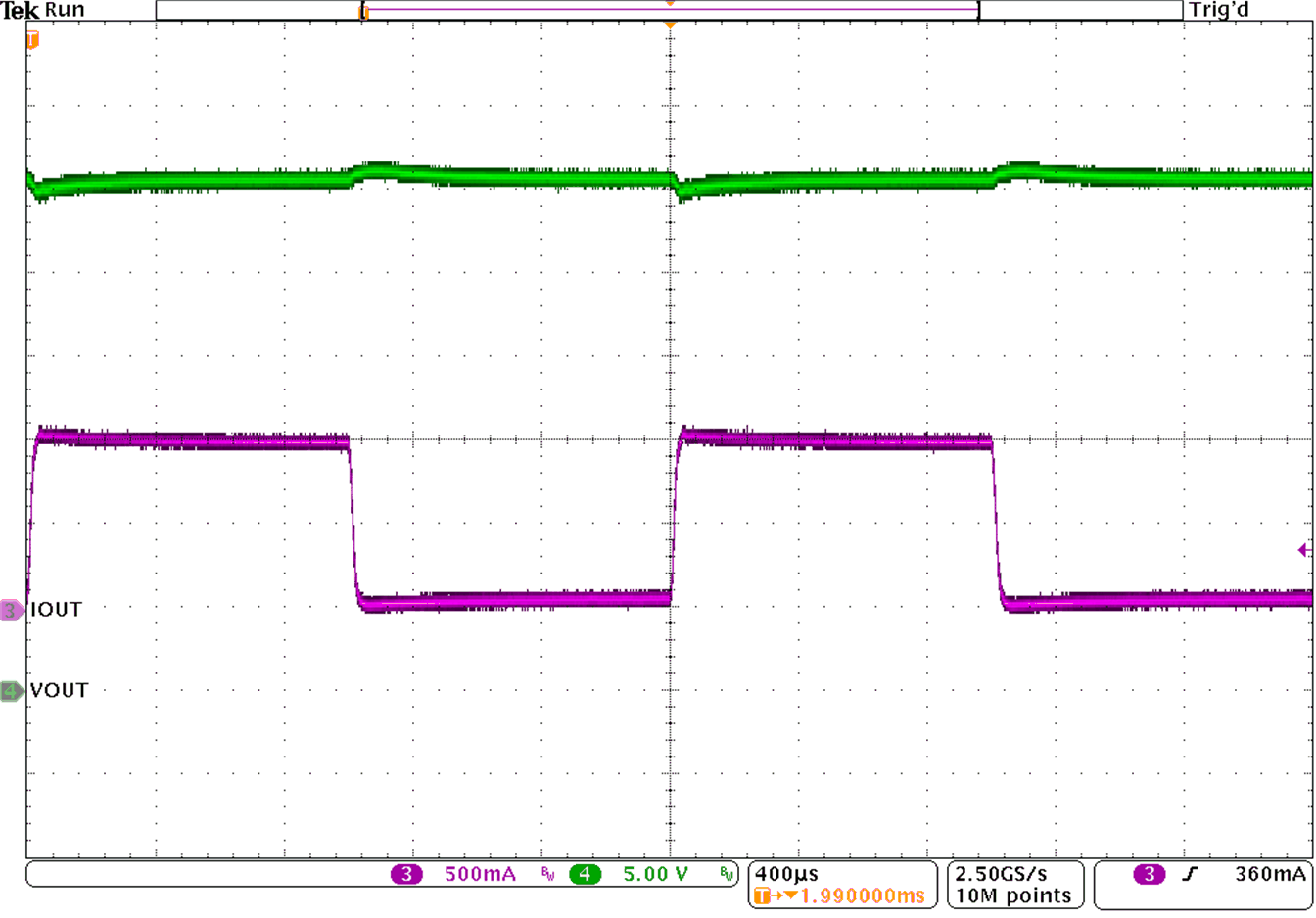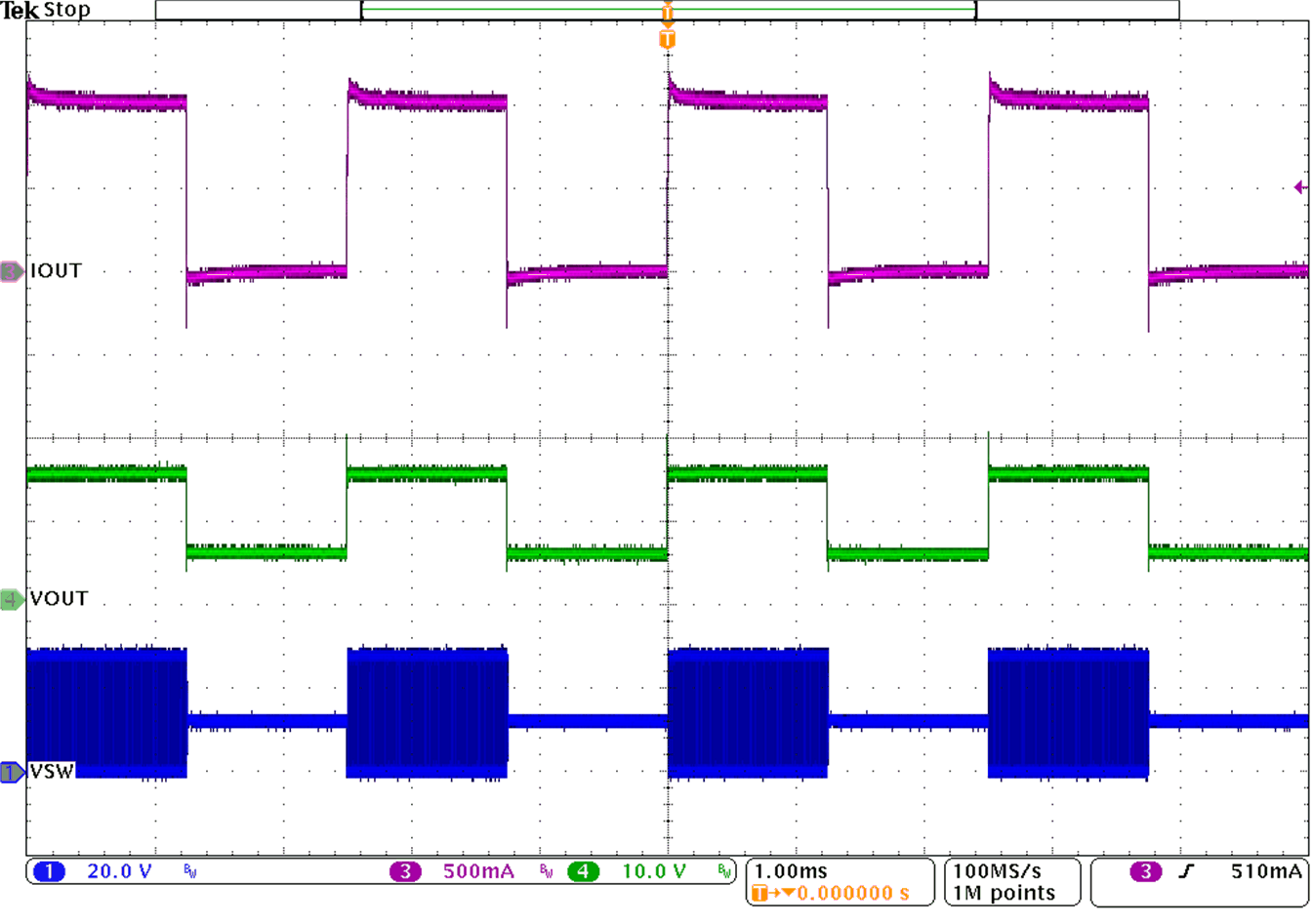SLUUCD4 April 2021 TPS92682-Q1
- Trademarks
- General Texas Instruments High Voltage Evaluation (TI HV EMV) User Safety Guidelines
- 1Description
- 2REACH Compliance
- 3Performance Specifications
- 4Performance Data and Typical Characteristic Curves
- 5Schematic, PCB Layout, and Bill of Materials
- 6Software
- 7TPS92682EVM-125 Power UP and Operation
4.2 Dynamic Performance
Figure 4-5 shows the load transient on the output of the CV channel-1. VOUT is set to 30 V and the output current is changed from 50mA to 1 A. The overshoot and undershoot caused by load transient is less than 1 V.

Figure 4-6 shows PWM dimming of the CC channel-2. The ILED is programmed to 1A. A string of 5×LEDs are connected to the output of the channel-2. Internal PWM dimming is used and the frequency is set to 400 Hz.
